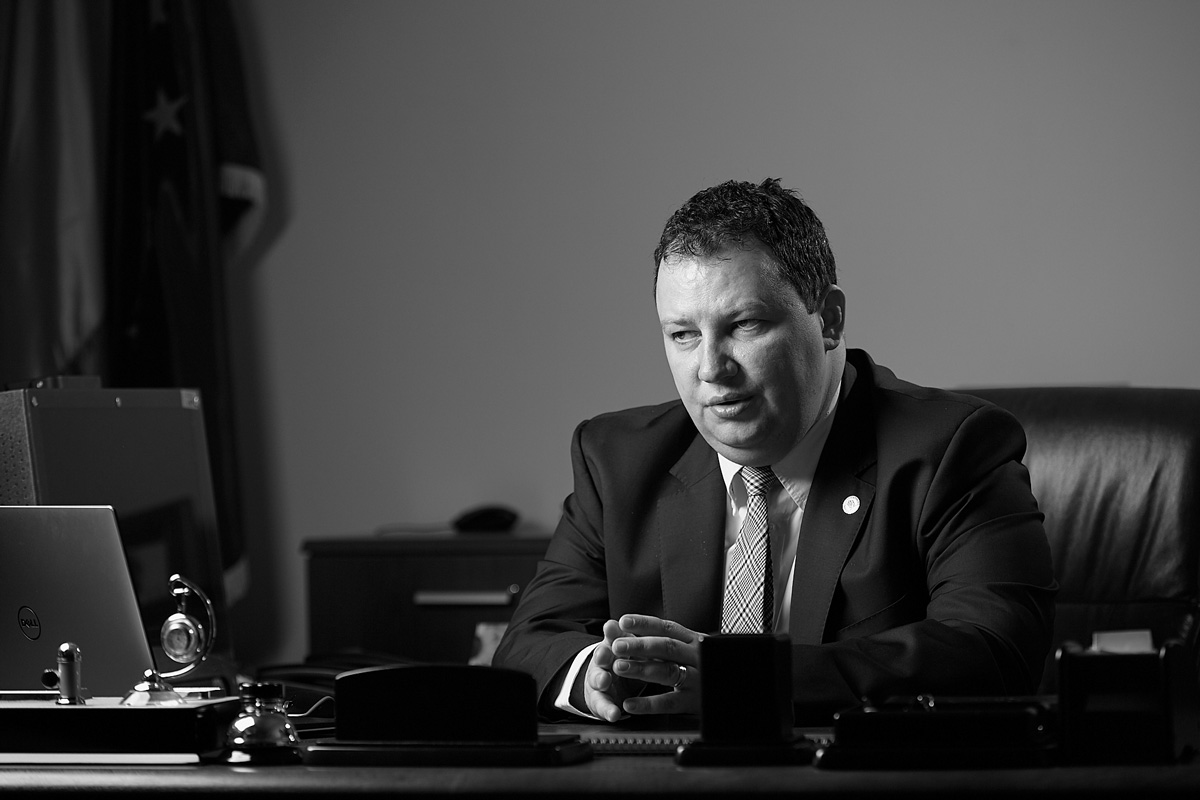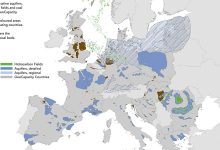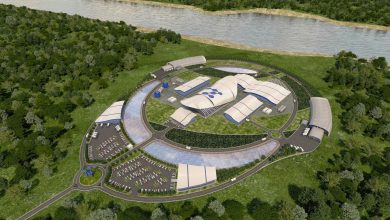Governing programme 2017-2020: Priorities in the energy sector
Romania’s current development phase requires the development of the highly qualified human capital and investment in research, innovation and development, so that, in every industry, the efficiency of processes and the development of high quality products is ensured, turning Romania into a hub of competitiveness in the area – the Grindeanu cabinet Governing Programme for 2017-2020 reads.
According to the new Energy Minister Toma Petcu, the national energy strategy on the development framework for 2016-2030, is to be completed in order to include, as priorities, the decrease by 40% of the emissions of greenhouse gases as compared to 1990, the share of renewable energy to reach 27% of the energy demand, energy efficiency to reach at least 27% as compared to the status quo scenario and the interconnection degree of the power systems to increase to 15%.
Over medium and long term, until 2035 and subsequently, the adaptation of the energy mix is envisaged, giving priority to renewable energy, coal and clean gas, hydrogen combustion and nuclear energy, the Energy Minister said during the hearings by the parliamentary committees for his investiture. This transition requires the redrawing of Romania’s energy policy, a new strategic approach and the redefining of some priorities, focus is to be laid on research – innovation and support, on promoting new technologies regarding energy storage, smart networks or on energy efficiency of the entire system.
Strategic objective
Romania has an obsolete energy system, polluting and inefficient. “Out of 100 units of energy for raw materials, only 15% reach the end consumer. This disadvantage must be turned into an opportunity, into a strategic goal: streamlining the energy system with direct and immediate impact on lowering energy prices and on improving the citizens’ life quality by improving the environmental quality. The solution to the new technological and systemic challenges is a new technological revolution, i.e. a new digital revolution,” the government programme reads in regard to the energy sector.
Ensuring energy security and efficiency
The governing programme envisages the monitoring of the contracts negotiation procedures and ensuring transparent procedures, review of the tax legislation in the field of oil and gas, but also the strengthening of the power and independence of the specific control and regulation authorities, as well as avoiding situations of monopoly.
The Romanian energy system must be integrated at continental level, based on competition, on optimum use of resources and supported by an autonomous, independent, transparent and effective regulatory system both for the energy markets and for operators and consumers.
In order to ensure energy security and efficiency, the energy system must advance simultaneously on the following directions:
- Maintain an energy mix by diversifying the sources and technologies for energy production, promoting renewable energy and conversion technologies for electricity, heating and cooling with low-carbon emissions;
- The decarbonisation of the transport system by switching to alternative fuels;
- Energy market liberalization and interconnection of energy networks, with ‘smart’ and communication networks for a complementary and interactive network of services;
- Elimination (minimization) of dependence between economic development and environmental degradation by providing clean, secure and affordable energy;
- Policies to increase energy efficiency and promoting low emission carbon technologies, combined with a stable market for carbon emissions may determine the direction and the behaviour change.
Building new power units
Also for ensuring the national energy security, the governing programme 2017-2020 reads that the electricity transmission and distribution network is a social safety net, representing the foundation for the progress of society. In the coming years, the building of new coal power units using the latest clean technologies and having high efficiency will be part of the answer to the increased electricity consumption. The new nuclear capacities or the new hydropower capacities will play a key role in the decarbonisation of the electricity production in Romania and in the region, the document reads. Also, local authorities will have to become a key player in the energy sector’s transition process and for redesigning the energy policies at national and local level.
Focus on discovering new reserves
The exploitation of probable and possible reserves can be achieved, according to the document, through targeted investments to develop the exploration and exploitation of oil and gas resources of Romania. “Over medium term, the discovery of new reserves is conditioned by completing the projects for deep onshore blocks (below 3,000 m), with complicated geology and for offshore blocks in the Black Sea, particularly in deep water (below 1,000 m). The works, to be carried out over short and medium term, can support production in order to avoid the depletion of resources,” reads the cited document.
Revitalization of coal production
Coal will remain an important component of the mix of energy raw materials in Romania. Over medium term, production of pit coal should be maintained to ensure the operation of a new energy group at the Mintia thermal plant and a group at the Paroseni thermal plant to produce electricity and thermal energy for the urban heating systems in Deva and in the Jiu Valley (Petrosani, Lupeni, Vulcan, etc.). At Mintia thermal plant, over the next 10 years, a project for an energy group (200 MW or 500 MW) can be implemented, with high efficiency (43-45% yield, supercritical or ultra-supercritical parameters), to replace the two existing groups, i.e. an energy group of 150-200 MW fluid bed or supercritical parameters, at Paroseni, equipped with the appropriate environmental installations. The indigenous lignite remains an important energy source in the mix of energy resources, on which further production capacities of electricity with high efficiency should be preserved and developed.
Strengthening the nuclear energy production
Nuclear energy will be a pillar of security in electricity production and in cutting CO2 emissions. The CANDU 6 units can have their economic life doubled, up to 60 years, by overhauls and retubing each reactor after 30 years of use. It is envisaged the maintaining of employment and professional expertise on a full nuclear cycle by increasing the share of nuclear energy in the national energy mix. In order to have a higher capitalization of the uranium reserves, it is necessary to ensure competitive market conditions in uranium exploitation (new mining quarries, improving the refining technologies). It also aims at attracting investors for the completion of units 3 and 4, respectively the retubing of units 1 and 2.
Increasing the hydropower potential
Achieving the programme for improving the hydropower potential will ensure higher volumes of electricity from renewable sources (including hydropower capacity of over 10 MW) by up to 43% in 2020, a value that will stabilize at about 42% of the hydropower potential. For 2017-2035, the hydropower sector can contribute with an installed capacity of about 6,500 MW in the national power system. According to Hidroelectrica’s strategy, the hydropower potential should reach 59% in 2020, respectively 67% in 2035. The completing of the ongoing investments in hydropower conducted by Hidroelectrica is necessary in order to support the national programme to reduce greenhouse emissions and to supplement the reserves of power for the system’s technological services. Completing the pumping hydroelectric project at Tarnita Lapustesti (1,000 MW) and other hydroelectric plants can help ensure the power reserve.
National investment programmes
Another important component of the future governing programme in the field of energy aims at launching national programmes focused on Romania’s country advantage. These include the completing of the infrastructure for alternative fuels CNG, LNG and bio fuels, the establishment of new distribution systems for natural gas and electricity in areas without power and gas supply (supporting the investment through the monopoly tax, about EUR 50 million per year).
Legislative amendments
Another objective announced by the new Energy Minister is the amending of the legislative framework. It will focus mainly on the reanalysis, in the new context of redefining energy policies in the European Union (EU), of the Law 123/2012 for electricity and natural gas, on amending the petroleum law, on the finalization and adoption of the new royalties Law, on transposing the EU directive on infrastructure for alternative fuels and for compressed natural gas (CNG), liquefied natural gas (LNG) and the transport of bio fuels. It also considers the drafting a law on biomass, bio fuels and geothermal energy, and a new energy law to have a unitary definition of hot water, heat and cooling supply for all Romanian homes.
Offsetting the production-consumption balance
Promoting electricity from renewable energy sources (RES-E) is an imperative in Romania and in the European Union, justified by the environment protection, increase of energy independence from imports by diversifying the energy supply sources and for economic and social cohesion reasons. A long-term predictable legal framework is required to include correction mechanisms achieved by market rules and to encourage investments in small capacities up to 1 MW.
The new government aims to build up a long-term predictable legal framework based on correction mechanisms achieved by market rules, but also on stimulating investments in small capacities up to 1 MW. In order to achieve this, however, an operational system of top plants is needed, because the current way of operating has negative implications on production costs and on the basic groups’ lifespan. Thus, it is important to build a capacity of 3,500 MW to offset the production-consumption balance without jeopardizing the system’s safety, for the current structure and for the projected one over medium-term. This conclusion will be considered when elaborating the scenarios for the network’s rational dimensioning.







